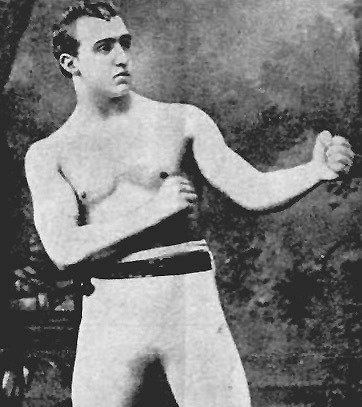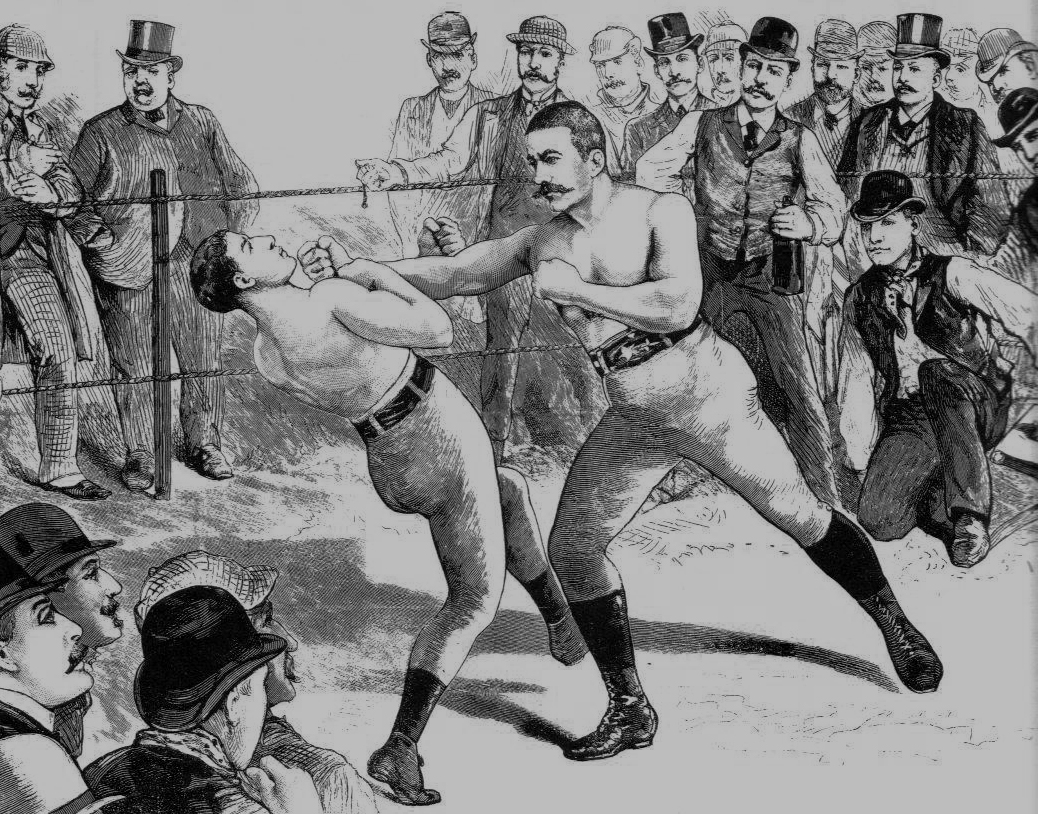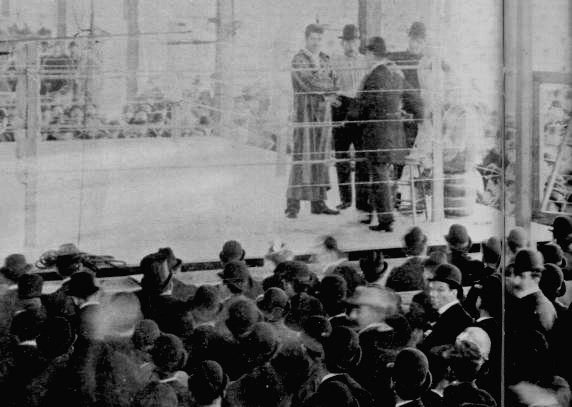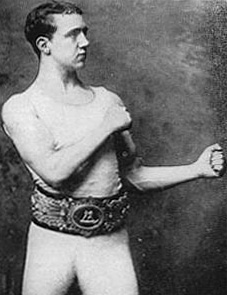|
Lardner (1972 p 173) called
Mitchell’s tongue vitriolic. Charlie may have had a big mouth but he
could back up his words. For his size, he could deliver very hard blows.
His hitting ability was accompanied by excellent timing and quickness
that added to the power of his blows. Gordon (2007 pp 330 364) described
Mitchell, “Inside the ring, he was destructive, with a fierce punch in
either fist and a willingness to taunt, humiliate and cut down whoever
stood in his way. Outside, he was quick-witted, articulate and
impudent.” Later, he speaks of Charlie’s “… undoubted brilliance as a
boxer-puncher …”
Mitchell encountered the weight disadvantage from the beginning of his
career as he often took on men who were 20-40 pounds heavier than he
was. For example, Bailey Gray had a forty pound weight advantage,
Caradoff had a nearly seventy pound weight advantage and Patsy Cardiff
had a thirty pound weight advantage, to name three. Needless to say, he
cleaned up the middleweights he faced. So, he decided to go to America
and challenge its best. He cleaned them up too. Add to the middies, the
number of heavier men he beat. His quickness and savvy easily offset
their muscles and brawn.
Johnston (1936 pp 61 102) stated, “Mitchell was a skillful boxer. He was
one of the smartest exponents of bare knuckle fighting that ever lived
and later became an extremely good man with the gloves. He knew every
subterfuge of the London Prize Ring Rules. He could hit hard, for a man
so light in actual fighting trim, and his courage was undoubted.” That
writer later called Mitchell, “…one of the most talented ‘goat-getters’
who ever pulled on a glove.”
Klein (2013 p 63) wrote of Mitchell, “His pluck allowed him to take on
heavyweights, and he once easily defeated an opponent with a
ninety-pound advantage. The tart-tongued Englishman matched John L. in
self-confidence, and he was a clever boxer. He may have lacked
Sullivan’s power, but he was fast with his fists, quicker with his feet.
Plus, Mitchell was shifty, which served him well in the ring and annoyed
his opponents.
When Mitchell came to
America in 1883, he tangled with Mike Cleary, himself a very dangerous
hitter. Charlie outgunned Cleary and battered him until police jumped
into the ring and stopped the slaughter.
According to Dibble (1925 p 40), “The cutest boxer who ever faced
Sullivan was doubtless Charlie Mitchell, the slippery Englishman who
first fought the champion in Madison Square Garden on May 14, 1883. In
the first round an unbelievable event occurred - John was knocked down -
a catastrophe that had never happened before.” (Sullivan claimed his
legs got crossed.)
In this contest, Sullivan outweighed him by at least fifty pounds.
Lardner (1972 p 49) wrote, “To everyone’s surprise, especially
Sullivan’s, the lighter Mitchell knocked the champion down in the first
round with a short right to the face.” Historian and writer Adam Pollack
(2006 p 61) discusses this bout and reports that newspaper versions of
the knockdown vary, but most say it was a straight right to the chin
that did it. Henning (1902 p 518) stated, “Although Mitchell succeeded
in knocking the great American down, Sullivan proved too powerful for
him …”
Charlie boxed Jake
Kilrain on March 26, 1884 in Boston. According to The Boston (Ma) Daily
Globe the next day, “The honors, to say the least, were easy, and if
Kilrain didn't get the best of the fight neither did Mitchell. No blood
was spilled on either side, and, although Kilrain went down once, it
certainly didn't appear like a knock-down, since Kilrain came up smiling
and not the least bit groggy. Indeed, both men at the end of the
so-called assault-at-arms were perfectly fresh and uninjured. It was a
very pretty exhibition of sparring, and both men showed themselves to be
clever fighters, although Mitchell displayed none of that dash and hard
hitting that was to be expected from his previous record.” In June of
1886, he fought the unbeaten Patsy Cardiff to a draw in Minneapolis. |



